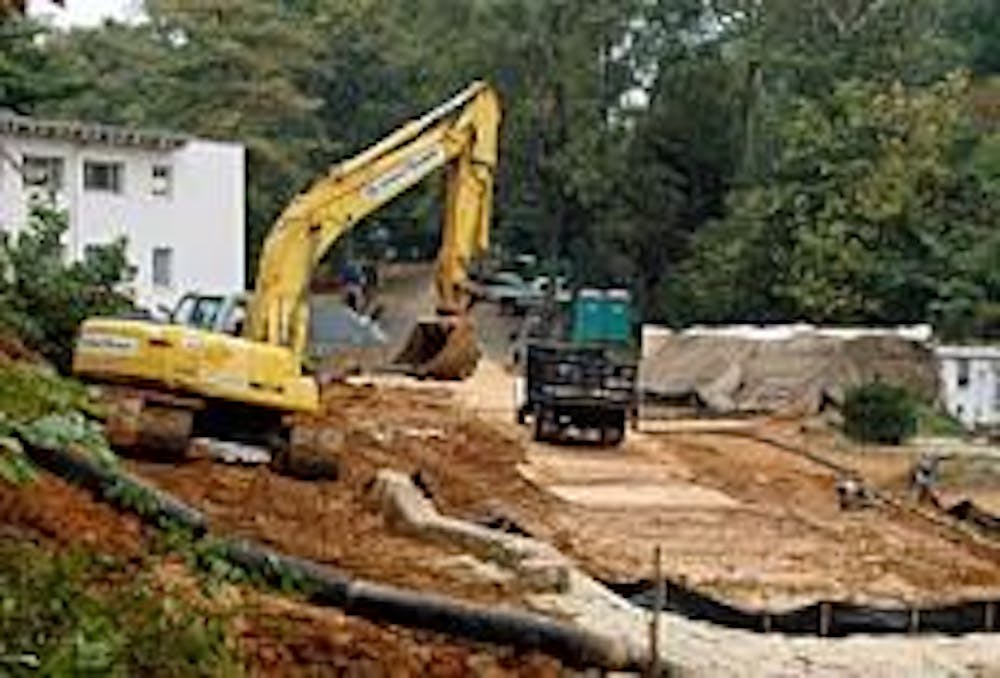In the last 30 days soil on AU property tested for 106,000 parts per million of arsenic, which means approximately 10 percent of the soil is arsenic, but the finding should not pose a threat to the community, said Gary Schilling, Spring Valley project manager for the Baltimore District of the U.S. Army Corps of Engineers.
The high arsenic levels were found two-and-a-half feet below the surface of the area in question, which is located between the Hamilton and Kreeger buildings, adjacent to the parking lot.
Schilling said the soil on the surface tested significantly lower, at about 100 parts per million. Arsenic levels below 20 parts per million can be left in the ground because there is less concern for long-term effects, The Eagle previously reported.
The high level of arsenic "doesn't really mean anything" because the threat of arsenic poisoning comes from it being ingested, Schilling said.
However, "it's information we want to share," he said.
Schilling said arsenic can occur naturally at levels of up to 300 parts per million in some parts of the country.
According to Schilling, on Sept. 8, the Corps of Engineers found glassware and white powder as they removed soil from areas of campus showing arsenic levels at over 20 parts per million.
Because there was suspicion that the glass and powder were chemical warfare agents the Army tested in the Spring Valley area during World War I, the Corps of Engineers had the soil rush tested for those agents. Within 24 hours, they determined that the soil did not contain mustard gas or lewisite, chemicals found in weapons the Army tested, according to Schilling.
Soil analysis tests showing arsenic levels were completed 30 days after the discovery. Because the tests for chemical warfare agents came back negative, the Corps of Engineers could handle a 30-day turnaround because site workers could continue the cleanup without worrying about more dangerous chemicals in the soil, Schilling said.
The Corps of Engineers just disclosed the results of the testing Tuesday at a meeting of the Spring Valley Restoration Advisory Board, which reviews and comments on technical documents and activities associated with the Spring Valley cleanup.
The Corps had previously found arsenic on AU property in March, when a geophysical survey looking for buried items with a metal detector revealed a dark band of soil.
The band, located in the same 20-by-20 foot grid as the current finding, tested for 872 parts per million of arsenic, located two-and-a-half feet below the surface as well.
Johns Hopkins University is pursuing "anecdotal information" to determine what type of health studies should be conducted on local residents, according to Schilling.
Bill Hudson, public affairs specialist and community involvement coordinator for region three under the U.S. Environmental Protection Agency, said the preliminary health report was "one of the most comprehensive pieces of information" presented to the Restoration Advisory Board.
Hudson said community reaction to the study was positive at the RAB meeting because the study will help allow the community to be "able to characterize health risks, if any at the site," he said.
"By the end of this assessment, [the Corps of Engineers] should be able to come up with some fairly good risk guidelines," Hudson said.
Hudson said the report presented by Dr. Tom Burke of Johns Hopkins was preliminary. The final report will be announced in March of 2007, with the guidelines announced by the Restoration Advisory Board following the final report, he said.





